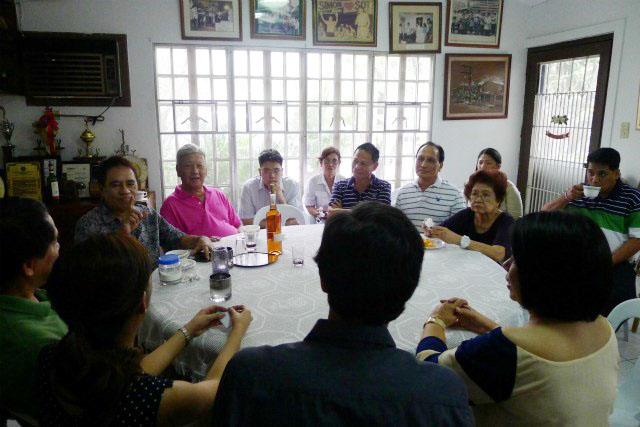In this day and age, marriage has become optional, and even commitment too. Just take into account the various permutations of relationship statuses these days: just going out, hanging out, just friends, special friends, dating, exclusively dating. Even President Benigno Aquino III is in some kind of relationship with TV host Grace Lee as they confirmed they were "officially dating." That brings a question to mind: If there's such a thing as "officially dating", is there a status dubbed as "unofficially dating"? And if so, is that the same as the MU (mutual understanding, or mag-un, for those who like each other but can't shout it out to the world) of a generation ago? What happened to good old-fashioned boyfriend-girlfriend commitment? With commitment hanging in the balance, it was thus comforting and reassuring for me to note that some good old-fashioned traditions are still alive. One of them is the pamanhikan.

The pamanhikan is a welcome opportunity to get to know each other's family. Here, the Peñano and Lantin families pose with the engaged couple (seated, center). Photos courtesy of Chinky Lantin
It's when the groom goes with his parents to the bride's family to officially ask for her hand in marriage. Prior to this, the groom-to-be would have already proposed marriage, and the bride-to-be would have already said yes (committing to spend the rest of their lives together!) and now is the time to bring their parents into the picture. So it's really just to formalize things, assuming that the couple have already asked their respective parents separately for permission or blessing to get married. Just a few months ago, my niece and her fiance had the pamanhikan held at our house so my parents could be there. Our house was a beehive of activity that Saturday morning, with my sister, the mother of the bride, busy fixing up and setting the buffet table, and everyone else cleaning. The food ordered from the caterer arrived before lunch, and so did the cake from the baker, a preview of the real wedding cake to come in a few months. Then my niece's fiance arrived with his family (mother, brothers and their own families) bringing crates of fruits and trays of sweets. Soon we all had lunch, introducing ourselves casually to each other while helping ourselves to the salad, the pasta, the roast beef, and the cake. But the real pamanhikan happened over coffee and dessert. We all gathered together, and my niece and her fiance formally introduced each member of their respective families.

The engaged couple (with their backs to the camera) listen intently as family members give advice and suggestions about the forthcoming wedding
My family, represented by my father, welcomed my niece's fiance formally to our family, and his family, represented by his mother (his father already passed away) in turn officially welcomed my niece to their family. Details about the wedding were then discussed. The couple informed all of us of their plans, from the venue to the date to the ninongs and ninangs, the entourage, and even the color motif -- they even brought out a fabric swatch to make sure we got the right shade of teal. Suggestions were given such as additional ninongs perhaps? And how about having my niece's dog and her fiance's dog also dressed up and brought to the church parking lot just so they can pose with their masters in their tux and wedding gown? We all giggled at the thought. Soon, my nephew-in-law-to-be's family bade goodbye, and we wished them well, certain that our niece will be in good hands. Some may see the pamanhikan as just another thing to check off on a to-do list. But for us, it was a welcome opportunity to get to know the other family in a more relaxed environment. It was also a wonderful way to honor our elders and seek their blessing before making a lifetime commitment. Too often these days we hear of live-in arrangements and what-have-you: a non-committed 'commitment.' Wouldn't it be good to have more of the real thing?






